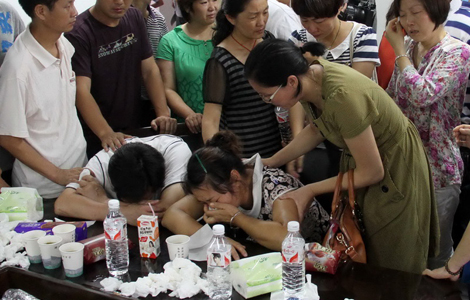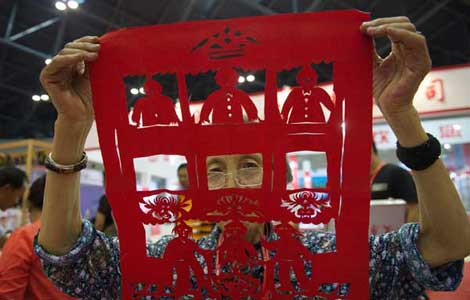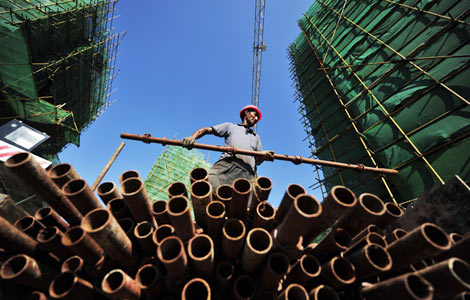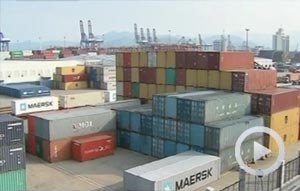A softer attitude to slower growth
Updated: 2013-07-08 07:42
(China Daily)
|
||||||||
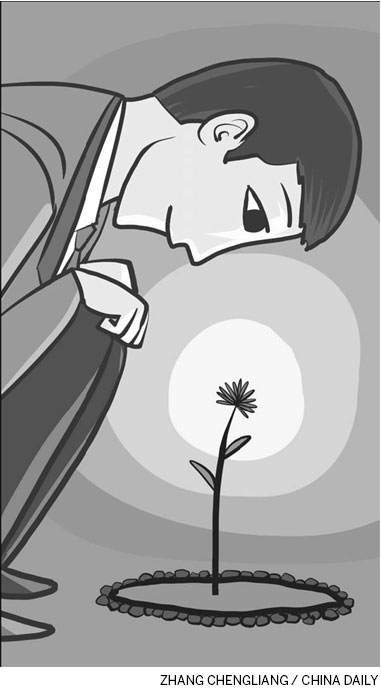
Economics | Yu Song
New economic policy regime may lead to more sustainable expansion
The focus of China's new leaders differs substantially from that of their predecessors.
In the first quarter of this year, GDP growth was 7.7 percent, down from 7.9 percent in the fourth quarter of last year. In April and May, indicators such as industrial production continued to fall, pointing to a significant likelihood that in the second quarter, GDP growth will fall further toward - and perhaps even reach - the official GDP growth target of 7.5 percent.
The government's reaction to such data in the past decade would probably have been to highlight the downside pressures on growth for a prolonged period and then start to take action to boost domestic demand, especially investment demand. However, so far the tone of most senior policymakers has been very benign and relatively relaxed.
It was not until June 17, during a visit to the National Audit Office, that Premier Li Keqiang acknowledged that "the economy faces downward pressures".
This reflects the fact that the new leadership is more tolerant of slower growth, although it is not completely disregarding the growth rate.
Instead of in effect viewing the 7.5 percent GDP growth target as the lower limit of a tolerable growth range, it probably views it more as a real target that it is comfortable with.
The official GDP growth target for next year is likely to be reduced, probably to 7 percent. This new approach suggests that, given the first quarter's GDP growth of 7.7 percent, there will not necessarily be an automatic policy response even if GDP growth falls below 7.5 percent in any quarter this year. The focus on financial risks has been the main driver of the recent liquidity tightening.
The new leadership is also more focused on structural issues, such as anti-corruption measures, environmental protection, financial risk, work/food safety and a reduction of administrative controls, among others.
It will probably take time for these measures to have an impact on the economy. By contrast, the shift in the monetary policy stance since mid-May, probably driven by risk control considerations, will put more downward pressure on near-term activity growth. In particular, tighter financial conditions in the interbank market have attracted the attention of the market.
But instead of viewing this as a random event caused by special one-off factors, we see this in part as a result of tightening aimed at preventing the leverage ratio from reaching an even higher level. This is because the control of funding costs for financial institutions via open-market operations is becoming an increasingly important policy tool, given that the narrowly defined renminbi loan supply is now an increasingly smaller part of overall liquidity supply.
While initially there were some doubts about whether the rise in the interbank rate early last month was a temporary pre-holiday (Dragon Boat Festival) phenomenon, the fact that the interbank rate had already started to rise meaningfully in mid-May and stayed at an elevated level for several days following the holiday suggests that this rise was not simply a pre-holiday liquidity squeeze.
It can be argued that the central bank did not actively drive up the level of the interbank rate, and that it was driven by a much lower level of foreign exchange inflows and more net fiscal withdrawals.
However, the fact that the central bank monitors these changes and that it took no action even though the interbank rate changed in real time says something about its stance. Moreover, a number of tighter regulations have been introduced in the financial system to control systemic risks: there have been tighter controls on interbank business activities and closer scrutiny of fixed-income trading, including the arrest of a number of traders for illegal activities. All these suggest an orchestrated attempt to fix the holes in the financial system to make its development more sustainable, possibly at the expense of short-term growth.
One issue closely related to the above discussion is the communication of policy thinking. While Western observers may assume it is a universal rule that policymakers should try to guide market expectations by communicating their thinking to market participants, this is still not always the case in China.
This could in part be because of the difference in the way policymakers view the issue conceptually and in part because of the practical difficulties in making the reasons for decisions explicit.
The loosening we saw in the third quarter last year, for example, was much more low-profile, in terms of the policy tone given the level of policy actions, than the 4 trillion yuan ($653 billion) package, probably because of the political transition and some criticism of the 4 trillion yuan package. Whether we believe these criticisms to be justified is a separate issue.
The tightening bias may be much more sustainable than what is expected by the market.
Unlike a tightening driven by concerns over inflation, a tightening motivated by risk control may prove to be more sustainable, as control of the leverage ratio needs to be, almost by definition, a continuous process. At the risk of being simplistic, over the previous two decades, economic policy making could be divided into the period under the then premier Zhu Rongji (1992-2002) and that under former premier Wen Jiabao (2003-2012).
The decade under Zhu had a strong focus on fundamental reforms, including entry into the World Trade Organization, the bankruptcy of SOEs and the substantial restructuring of the government.
In the decade under Wen there was a much more limited number of fundamental reforms, and the policy focus was more on the cyclical management of the economy to prevent it entering a sustained period of deviation from trend growth. While it is not always necessary to choose either reform or cyclical management as the primary focus at the expense of one or the other, in practice there is often a bias, and sometimes specific short-term and long-term goals do conflict with one another.
For example, loosening driven by fixed-asset investment is viewed as both necessary and effective from a cyclical management point of view but it tends to make air pollution worse as it tends to be more closely linked to heavy industrial production.
From the relatively limited amount of information available, the decade under President Xi Jinping and Premier Li Keqiang may fall somewhere between the previous two decades, with less focus on cyclical management than in the past decade but more than in the decade before that, and more fundamental reforms than in the past decade but less than in the decade before that (ideally, we would like to see more fundamental reforms, but realistically the reform process is likely to be challenging given the political and social structure).
The change in the administrative structure at the People's Bank of China, the central bank, could have played a particularly important role in the change in monetary policy stance. As Governor Zhou Xiaochuan moved up the political hierarchy and became by far the most experienced monetary policymaker in China, the PBOC has in effect, although not necessarily institutionally, gained more autonomy in the setting of monetary policy. Given that the new senior leadership is less dovish and social criticism of "excess liquidity" is, rightly or wrongly, widespread, the PBOC may have found it easier to implement a hawkish bias.
While the individual preferences of most senior policymakers matter significantly for the above overly simplified description of policy making styles, the latter also reflects a change in social preferences.
When the economy was running well in terms of wealth and job creation during the early 2000s, it was more difficult to push for aggressive fundamental reforms, as many in society and government probably believed that "if it isn't broken, don't fix it".
While we believe the system is far from broken, social preferences are likely to have changed as a result of sustained economic development, with its heavy toll on the environment and increased wealth for a significant portion of the population. For example, wealthier citizens and policymakers may now value clean air more highly than financial wealth.
On the other hand, as the economy has expanded continuously (it was still expanding even at the trough of the cycle), the absolute level of pollution by various measures has also increased continuously. The high levels of air pollution in many Chinese cities since last year may have marked a turning point in the social attitude toward pollution controls, and the policy comments and changes since then are to a large extent a result of this. Such a change in social preferences is another reason why the PBOC's hawkish bias may last longer than would otherwise be the case.
But it is not all bad news.The flipside of this seemingly bad news for the near-term growth outlook is that we may see a reduction in systemic risks, especially in the financial system, provided there is no persistent over-tightening.
The latter could result in a debt deflation scenario that would lead to even more risks. We think policymakers understand these risks in principle, although exactly how much tightening is too much is never an easy question to answer. However, if the recent level of interbank liquidity tightness is maintained, we would probably see a normalization to a tighter level than earlier in the year but not quite as tight as now.
Furthermore, more reforms can raise the level of potential growth. Whether this would be sufficient to offset the demographic headwind is much less clear and will depend on the decisions taken at the forthcoming Third Plenary Session of the 18th Party Congress.
As a baseline scenario, we may continue to see a gradual fall in potential growth, but a long way off the collapse foreseen by many bears. Our relatively cautious stance is partially based on the observation that there has been a clear willingness to implement some important reforms, such as reducing the administrative burden on the economy.
The author is an economist with Goldman Sachs / Gaohua China.
These views do not necessarily reflect those of China Daily.
(China Daily USA 07/08/2013 page15)
Most Viewed
Editor's Picks

|

|

|
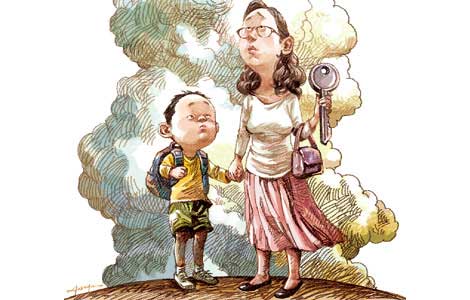
|

|

|
Today's Top News
Boeing 777 passenger 'mumbled a prayer'
Ex-minister gets suspended death
Workers return after dispute
Job seekers should be cautious abroad
River pollution sparks criticism
Terror attack was planned: suspect
Booming security industry needs skilled youth
A bright future for native black pigs?
US Weekly

|

|
